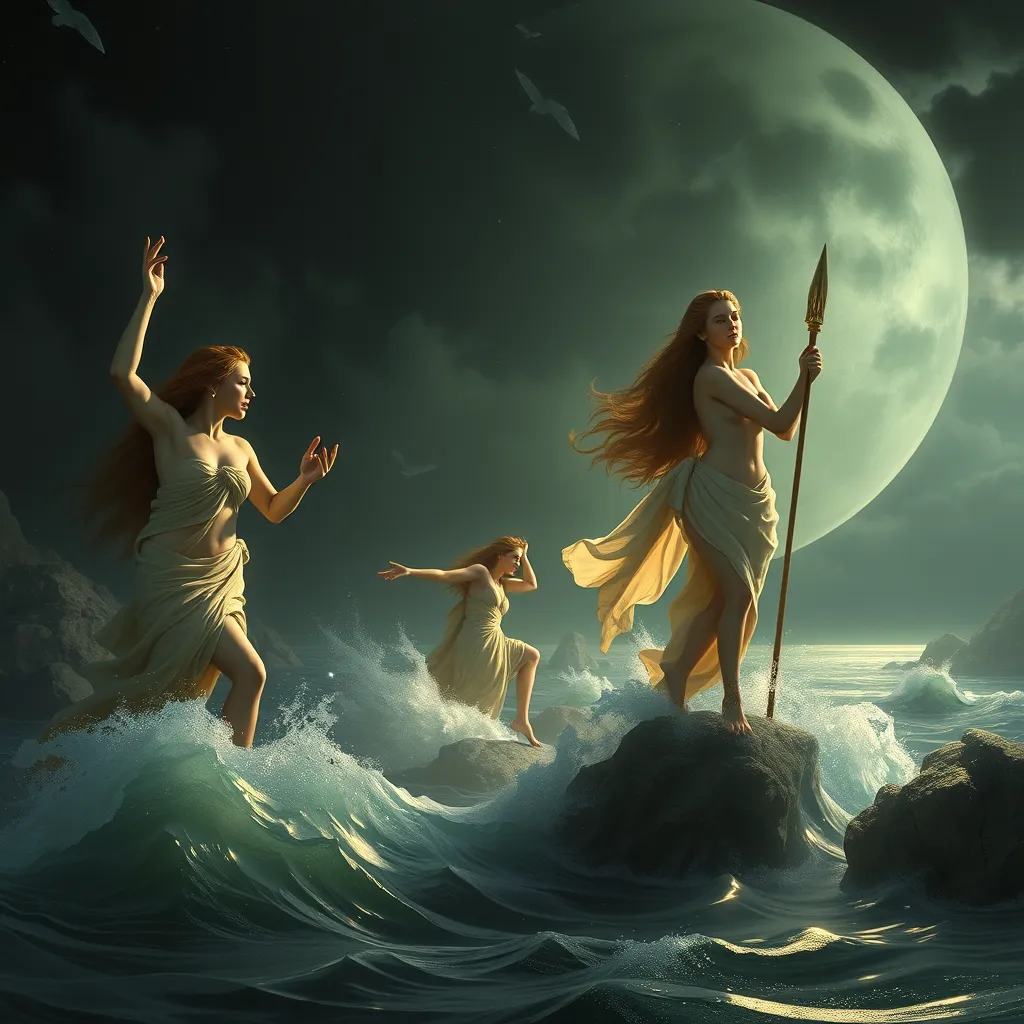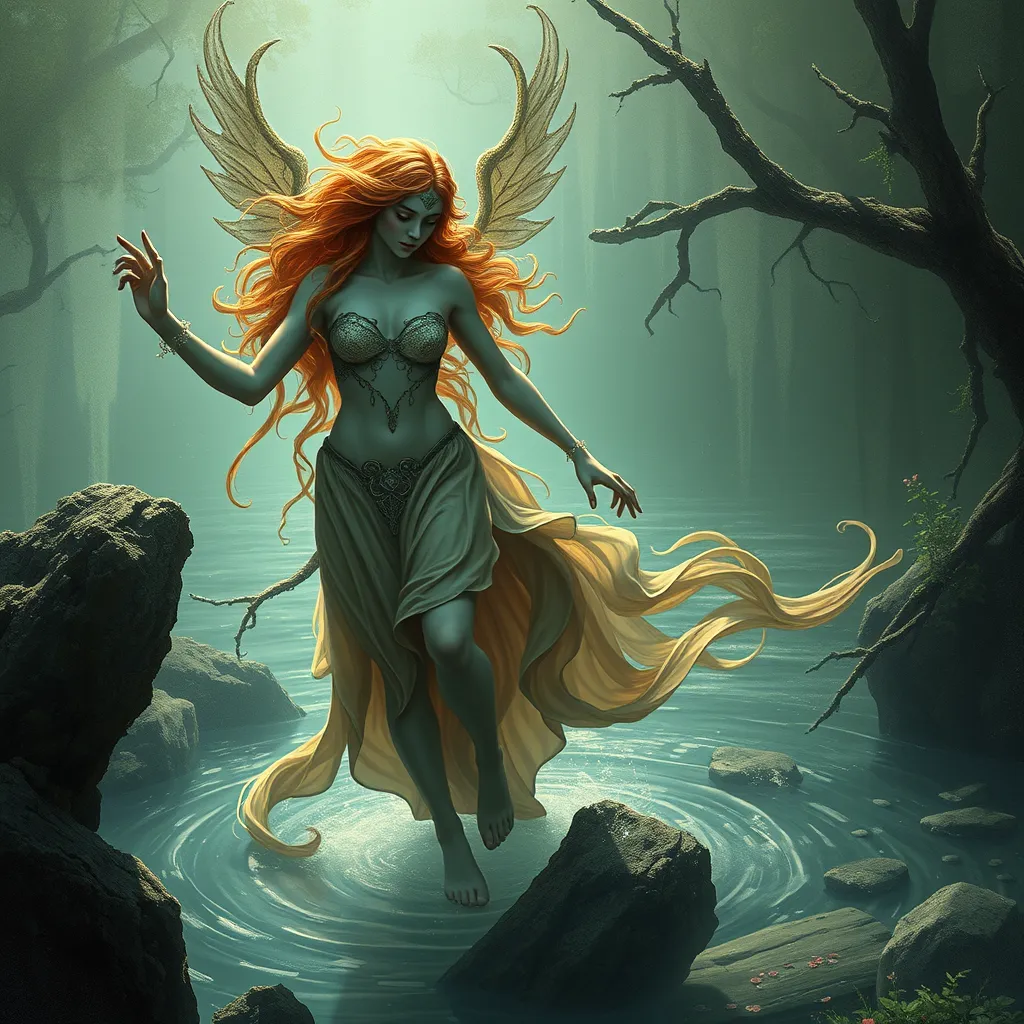The Soul-Stealing Dead: Delving into the Mythical Origins of the Chinese Jiangshi
I. Introduction
The Jiangshi, often referred to as a “hopping vampire,” is a prominent figure in Chinese folklore, characterized by its undead nature and its notorious habit of preying on the living. This creature is not only a source of fear but also represents deeper cultural beliefs surrounding death and the afterlife.
In Chinese folklore, the Jiangshi is imbued with significant meaning, serving as a cautionary tale about the consequences of improper burial practices and the importance of respecting the dead. This article aims to explore the origins, characteristics, and cultural significance of the Jiangshi, shedding light on its enduring legacy in both historical and contemporary contexts.
II. Historical Context
A. Origins of Jiangshi in ancient China
The origins of the Jiangshi can be traced back to ancient Chinese beliefs about the afterlife and the spiritual realm. Historical texts suggest that the concept of the Jiangshi emerged during the Zhou Dynasty (1046–256 BCE), reflecting societal anxieties regarding death and the proper treatment of the deceased.
B. Evolution of the myth throughout different dynasties
Throughout various dynasties, the Jiangshi myth evolved, adapting to the changing cultural and political landscapes of China. For example:
- During the Han Dynasty (206 BCE–220 CE), tales of the Jiangshi became intertwined with the practice of Taoist sorcery.
- In the Tang Dynasty (618–907 CE), the Jiangshi began to be depicted in literature and folklore, solidifying its place in popular culture.
- By the Qing Dynasty (1644–1912 CE), the Jiangshi had become a staple in ghost stories and was commonly referenced in popular entertainment.
C. Cultural significance in traditional Chinese beliefs
The Jiangshi holds a critical place in traditional Chinese beliefs, representing the consequences of improper burial and the unrest of spirits. The fear of the Jiangshi is often tied to the belief that the dead should be treated with respect, as their souls may return in a restless form if their bodies are not properly cared for.
III. Characteristics of the Jiangshi
A. Physical appearance and traits
The Jiangshi is typically described as a corpse that has become reanimated. Key physical traits include:
- Greenish skin, often depicted as decomposed or rotting.
- Long, unkempt hair that may appear matted.
- Wearing traditional clothing from the period in which it died, often seen in a Qing Dynasty-style robe.
B. Behavior and movement
Unlike typical zombies, Jiangshi are known for their distinctive way of moving. They often “hop” rather than walk, due to rigor mortis in their limbs. This unusual movement adds to their eerie presence and is a significant aspect of their portrayal in stories and films.
C. Distinctive abilities and supernatural powers
Jiangshi possess several supernatural abilities, including:
- The ability to suck the life force or “qi” from the living, which is often depicted as a soul-stealing act.
- Superhuman strength and speed, allowing them to overpower their victims.
- Resistance to conventional means of harm, making them difficult to kill.
IV. The Soul-Stealing Legend
A. Explanation of the soul-stealing aspect
The soul-stealing nature of the Jiangshi is central to its mythos. It is believed that these undead creatures consume the life force of the living to sustain themselves. This act is often depicted as a desperate attempt to reclaim the vitality lost at death.
B. Connection to Chinese concepts of life, death, and the afterlife
The Jiangshi embodies the complex relationship between life and death in Chinese culture. The act of stealing souls reflects a belief in the interconnectedness of the living and the dead, highlighting fears and respect for the afterlife.
C. Variations in the soul-stealing narrative across regions
While the core concept remains consistent, variations of the Jiangshi legend exist across different regions of China. In some areas, the Jiangshi is more malevolent, while in others, it is depicted as a misunderstood figure seeking peace.
V. Jiangshi in Chinese Literature and Art
A. Representation in classical literature
The Jiangshi has been featured in various classical Chinese texts, often as a cautionary tale. Stories from the Tang and Song Dynasties depict encounters with Jiangshi, illustrating the moral lessons of respecting the dead.
B. Depictions in traditional art forms
In traditional Chinese art, the Jiangshi is often portrayed in a dramatic and stylized manner, capturing its eerie presence. These depictions can be found in:
- Paintings and scrolls that illustrate ghostly encounters.
- Ceramics and sculptures that depict the Jiangshi in various forms.
C. Influence on modern storytelling and media
Modern Chinese literature and media continue to draw inspiration from the Jiangshi myth, often reinterpreting its characteristics for contemporary audiences. This ongoing influence can be seen in novels, short stories, and theatrical productions.
VI. Jiangshi in Popular Culture
A. Role in films, television, and video games
The Jiangshi has become a popular figure in contemporary Chinese cinema and television, often portrayed in horror and comedy genres. Notable films such as “Mr. Vampire” have popularized the Jiangshi, blending traditional elements with modern storytelling.
B. Modern reinterpretations and adaptations
Many modern adaptations take creative liberties with the Jiangshi myth, presenting it in new and innovative ways. For instance, some narratives explore the Jiangshi’s backstory, turning it into a tragic figure rather than merely a monster.
C. Global impact and recognition of Jiangshi mythology
As Chinese culture gains more recognition worldwide, the Jiangshi has also found a place in global media, appearing in various international films and video games, thus broadening its appeal and understanding beyond Chinese borders.
VII. Jiangshi and Contemporary Beliefs
A. Modern interpretations of the Jiangshi myth
In today’s society, the Jiangshi continues to be a subject of fascination. Modern interpretations often focus on themes of redemption and the consequences of neglecting one’s ancestors, reflecting contemporary values and beliefs.
B. The Jiangshi in current Chinese spiritual practices
While the Jiangshi may be considered a myth, its influence persists in certain spiritual practices. Rituals aimed at appeasing restless spirits often reference the teachings surrounding the Jiangshi, reinforcing the importance of honoring the dead.
C. Influence on contemporary horror and supernatural genres
The Jiangshi has significantly influenced modern horror and supernatural genres, inspiring writers and creators to explore themes of fear, death, and the supernatural. Its unique characteristics and backstory provide a rich source for storytelling.
VIII. Conclusion
A. Summary of key points
The Jiangshi remains a fascinating figure in Chinese folklore, embodying deep cultural beliefs surrounding death and the afterlife. Its evolution from ancient legend to modern pop culture phenomenon illustrates its enduring significance.
B. Reflection on the enduring legacy of the Jiangshi
The legacy of the Jiangshi is a testament to the rich tapestry of Chinese mythology and its ability to adapt and thrive in contemporary society. The creature serves as a reminder of the importance of respect for the dead and the cultural narratives that shape our understanding of life and death.
C. Final thoughts on the relevance of Jiangshi in today’s world
As society continues to explore the boundaries between life and death, the Jiangshi stands as a compelling figure that invites reflection on our beliefs, fears, and the stories we tell about the supernatural. Its relevance endures, echoing the timeless human fascination with the mysteries of the afterlife.



